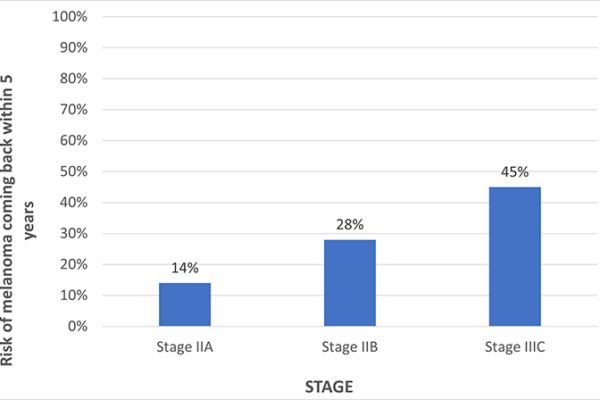Is Stage II melanoma at high risk for coming back (recurring)?


Dr. Jason Luke: The numbers vary a little bit, but it’s approximately the case that for Stage IIA melanoma, the risk of recurrence there is about 14% over five years (Graphic). But when we get to Stage IIB and Stage IIC, we get to higher levels. So, this five-year risk of recurrence is 28% for Stage IIB. And for Stage IIC, the risk of recurrence would be as high as 45%. And these numbers show you that in approximately a third to almost half of cases, the melanoma will spread to somewhere else in the body just because the primary melanoma has grown very deep in the skin.

Graphic. The risk of melanoma coming back 5 years after melanoma diagnosis for each Stage II substage. To learn more about these data click here.